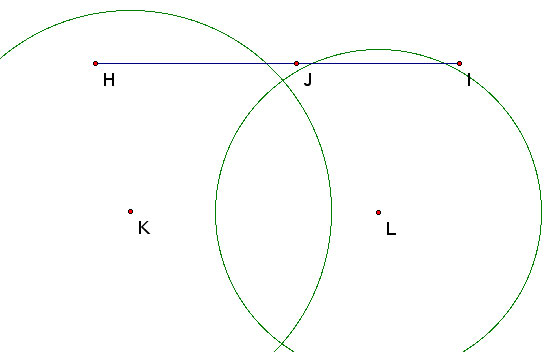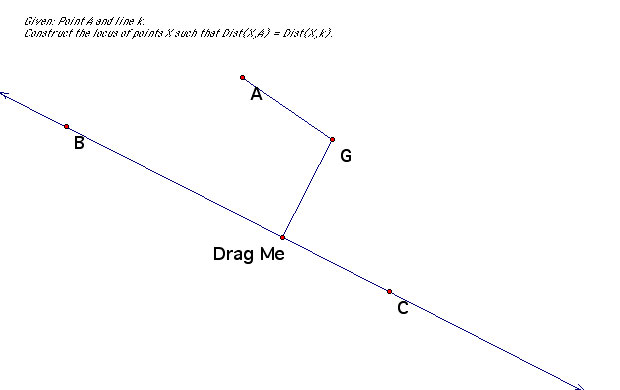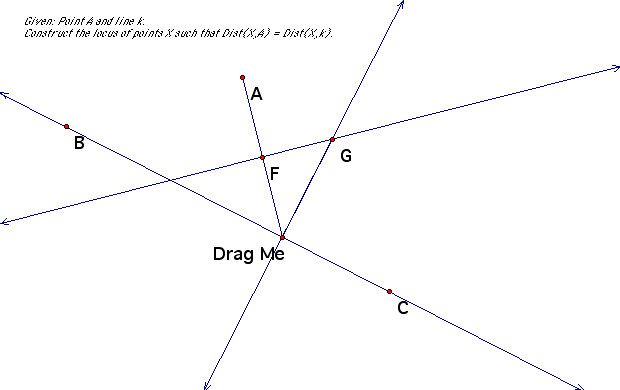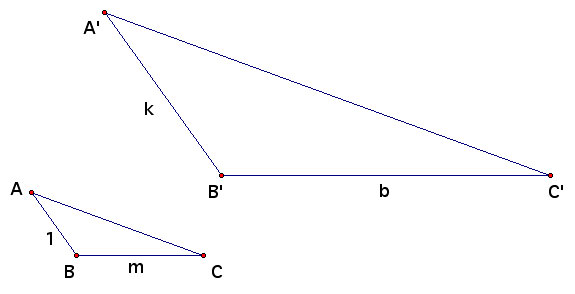
The idea is that you need a segment of constant length and a free point on it that will break the segment into 2 segments whose lenths add up to the length of the constant length.

Then make all points that are HJ from point K and all points that are JI from L.

Similar to #1 -- construct a free P point on line NO that always has a constant amount tacked onto it. The length of ST is the constant amount that is tacked onto NP. Thus, NU-NP=ST. Note also that P is free to vary along line NO.


Suppose G is equidistant from BC and A. Then the perpendicular segment from G to BC is equal in length to GA. Thus, triangle AGD is isosceles. To locate G, you need only construct the free point DragMe (D) on BC, construct a perpendicular to BC at D, construct the perpendicular bisector of AD, and then find its intersection with the perpendicular you constructed to BC at DragMe. (See below.)

You might be wondering "How to vary G?" Well, you DON'T vary G, at least not directly. G is the result of a construction, so to vary G you must vary something that is free to vary and on which G depends. If you vary the point DragMe, then G will follow. When you move DragMe, point G moves and stays equidistant from line BC and point A. When you select G-DragMe-BC and construct the locus, you get all points equidistant from BC and A.
Notice that this construction is essentially the same as what you did in Constructions 1, Question 3.
Suppose that ABC and A'B'C' are similar triangles. Then k/1 = b/m, so b = km.
